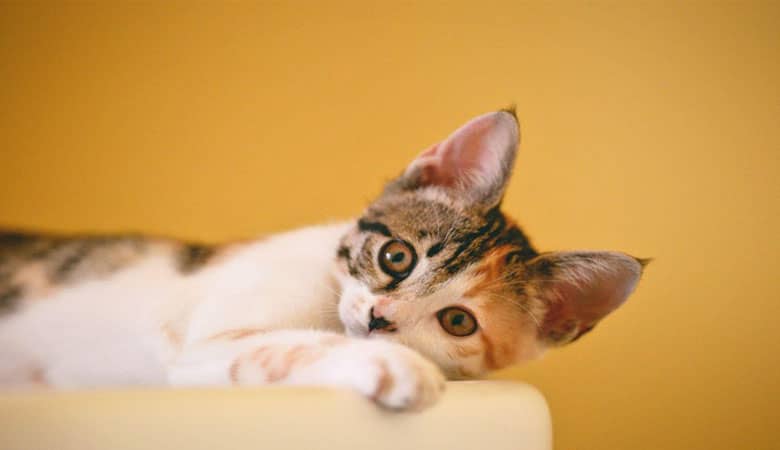Adopting a new car is one of the most exciting and challenging things you can do in your life, especially when it’s semi-feral or a generally outdoorsy cat. Helping an outdoor cat adjust to her new surroundings can be pretty complicated and time-consuming, which is why many of them are being sent back to the adoption center.
This is understandable, as outdoor cats have a more challenging time adjusting indoors, but it doesn’t mean it’s not worth the effort. While it can seem like a stalemate or an outright loss at first, there are several things that you can do to make their transition more manageable and smoother (well, probably not smoother since you’re most probably going to get scratched and bitten at first, but that’s normal).
But don’t worry too much, as from many cat owners’ personal experiences, the hard work and patience are well worth it because outdoors cats are some of the sweetest and most loving cats you’ll probably see in your whole life. So how should you do it, exactly? Here are some tips.
Have a Dedicated Cat Room
When you bring a new cat home, or at least when you’ve been living with a new cat for a few days now, and you have a spare room, one of the things that you can do is to have a safe room ready with all of the cat’s amenities.
It should be complete with a scratching post, toys, food, water, and a silica cat litter box (make sure that the litter box and her food should be in the opposite part of the room). This room should also be quiet and shouldn’t be visited by anyone other than you. Don’t worry; once your cat has adjusted, you can turn this room back for human use.
Also, this room should have some small spaces they can hide in, like a cat house, blanket, or a draped-over chair. This is to ensure they have a small safe space they can hide in when you visit. This is needed since, for a new cat, you’re a stranger, and so they need a safe space to hide from you. Don’t worry, they will do this a lot in the early phases, but as long as you keep spending time with them, they will ultimately be comfortable with you and not hide from you anymore.
Put Food to Use
Food is the key to many people’s hearts and, adorably, to your cats! Food is the initial key to your cat’s attention and trust, which is why many people use food to their advantage to earn the cat’s loyalty and affection. For the first phase, it’s crucial to stick to a regular feeding schedule so that your cat learns without fail that you are the bringer of food.
Once the cat is comfortable enough to eat the food you bring, the next step should be you being in the room while they eat. Do not interfere while eating, as they will see it as hostile. Once they are comfortable enough, you can feed them directly with your hand by putting the food in your palm, and after that, you can then try to pet them as they eat.
Let Them Hunt
One of your cat’s greatest needs is to hunt. However, you don’t need live prey or even outdoor time to satisfy their hunting needs. Letting them hunt wild animals can lead to severe diseases and parasites, making you sick.
Luckily, you can do simulated hunting by interacting with them by playing. This can provide you with all the benefits without exposure to the risks. You can also use this time to spend some time with them, increasing their comfort with you indoors.
Along with playing, you can also let your cat eat with puzzle feeders instead of regular food bowls. A puzzle feeder will require their paws, noses, tongues, and even brains to get their everyday meals. This engages their minds and bodies to work naturally as intended and satisfies their need to hunt food before eating it. And as a bonus, you don’t have to do it yourself.
Avoid Eye Contact
If you suddenly find your cat intently staring at you, don’t engage. Eye contact is a hostile action toward outdoor cats. If you accidentally stare at them too long, they will become hostile and either run away or fight you for dear life. Once you accidentally have a staring contest with your new cat, the optimal thing to do at that moment is to blink slowly.
Close your eyes for a few seconds and then turn your head away. This shows your cat that you do not mean to threaten them, and they will see you take a submissive role, which can help them feel safe and more comfortable with you.
Make the Indoors More Interesting
For all of the risks and dangers of the outside world, the major disadvantage of the outdoors is that it isn’t dull. Your cat will have a lot of chances to hunt and chase potential prey, smell new things, and explore a lot more. Our human homes are designed to be comfortable for humans but do very little for our pet cats.
Along with providing interaction and playing, you can give your cats many opportunities to play, hunt, and smell new smells inside your home. These can be as simple as providing them a perch to see things outside, rotating toys, and even putting catnip in a bag. By making your home much more interesting, they will have less and less tendency to want to go outside.
Final Words
Introducing an outdoor cat can take a lot of patience, determination, and resources. But with all the hard work and trouble, you’ll go through, having a cat love you and the indoors is all worth it. It might take a lot of time, but your cat will soon adjust to indoor life, and you’ll finally have a companion that will love you but will still probably scratch and bite you. Good luck.

